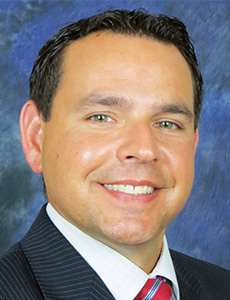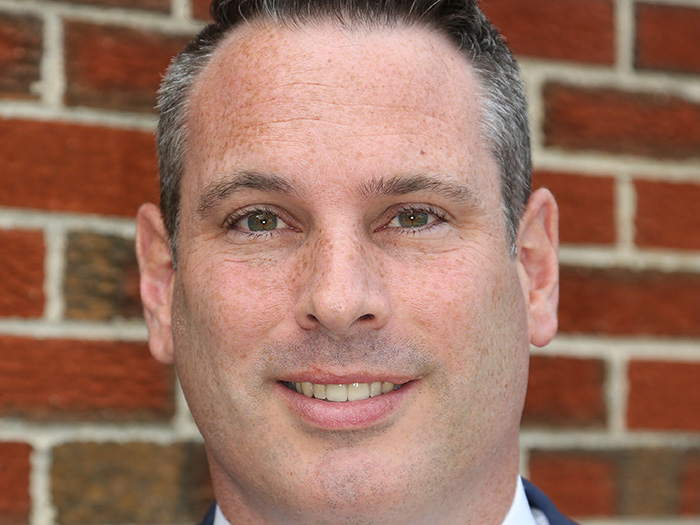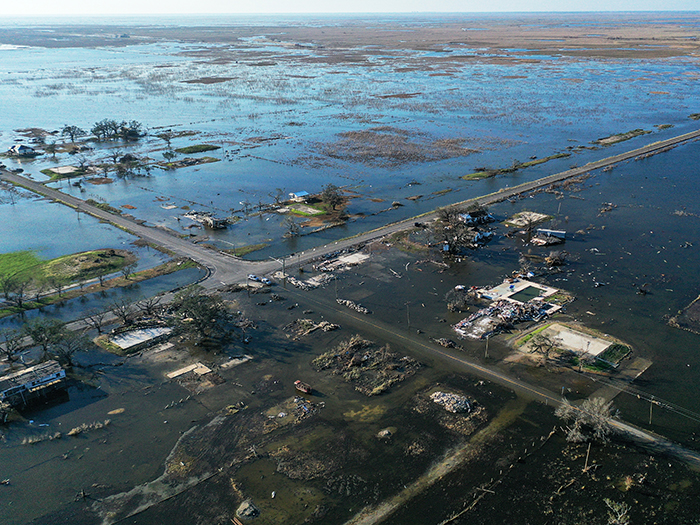2018 Most Dangerous Emerging Risks
AI as a Risk Multiplier

Viewers of even one hour of commercial television will likely see pharmaceutical commercials promising to cure eczema, migraine headaches or pattern baldness, among other things. But as fast as viewers can say, ‘ask your doctor if this is right for you,’ on comes a scary litany of associated risks.
Some industry insiders would say that it’s the same scenario with artificial intelligence (AI) — lots of benefits but with every benefit comes a new risk or two, making AI a risk multiplier across many industries, insurance included.
Artificial intelligence is already surrounding us. More and more, common — and evolving — intelligent devices at home, work, school and play are woven into the fabric of our lives. Some we recognize. Some we don’t. But either way, it’s here; it’s not going away. Nor should it. With the potential to do many things better, quicker, cheaper and safer, AI is a force to be embraced.
For example, AI can perform fraud detection much more robustly than humans can. Look at medical billing fraud as an example.
Thompson (Tom) Mackey, risk management consultant, EPIC Insurance Brokers and Consultants, said the auditing of Medicare cases with an eye toward fraud detection is 8 percent successful when conducted by humans. Using AI, the detection rate increases to 80 percent.
Instead of fearing AI, experts say, it’s better to identify risks and work to mitigate them.
Adam Cottini, managing director, cyber liability practice and area senior vice president, Gallagher, New York City, where he is responsible for the overall direction of the cyber liability practice, said “a shift in liability” is an AI risk that should be on the radar of insurers and insureds.
“Technology allows machine learning in things such as robotics, self-driving cars, drones and other items. These things are deployed in a variety of industries. What happens if there is a massive failure? When something goes wrong you need to assess the loss and determine who is liable.”
Despite the dangers, Cottini feels that AI offers a great opportunity to increase safety and decrease injuries and losses.
“The predictive algorithms have given AI an edge over humans. There is a small percentage of decisions where a human has an advantage. For most decisions, in driving or other areas, the machine is going to perform at a higher level.
“If you are a risk manager of a vehicle fleet, you need to look at the cost-benefit of the automated technology. But you also consider how AI is helpful. It can quickly find and diagnose problems. It’s the best of both worlds — it does what it can, and if need be, it also involves a human,” he said.
Take, for example, self-driving cars. “What is the safety mechanism?” Cottini asked. “These devices are all connected. How do they deal with a failure at the command center? What is the back-up plan? Can they communicate locally?”
In this scenario, Cottini said liability is likely to shift from auto policies to product liability policies; from drivers to product manufacturers.
Mackey specializes in the design and implementation of risk management programs for clients. Mackey identified a range of internet-related risks that fall under the umbrella of cyber security and also named business interruption as an exposure. But, the biggest risk, Mackey said, is the risk of the unknown.
“AI is a newer risk, but it’s also a game changer. It changes every day,” Mackey said. “With fire or property or anything else, the risks are well known. There are risks that are inherent in AI that we don’t know about yet. In my mind, the main risk associated with AI is basically the uncertainty that comes with it. It’s a brand-new frontier.”
“Liability is likely to shift from auto policies to product liability policies; from drivers to product manufacturers.” — Adam Cottini, managing director, cyber liability practice, Gallagher
Kelly Geary, Integro’s U.S. cyber practice leader and managing principal, also said AI is a risk multiplier in the form of increased cybercrime.
“Cybercrime is already at pandemic levels,” Geary said. “The ROI for a cybercriminal is 1,000-plus, and the risk of getting caught is low. AI makes it easier for these criminals to perpetrate crimes en masse.”
Also high on Geary’s radar is what she called a shift from financial risk to personal risk: “AI can now threaten people personally,” she said. “Lives, health and health care are at risk. People with medical devices such as pacemakers could be affected. Criminals can control heating and cooling systems in a hospital ICU. The more connected we become, the more at risk we are,” Geary said.
Manufacturing companies, Mackey said, are becoming ultra-lean, and therefore leveraging AI through machine learning and automation.
If a machine breaks down, it could cause significant business interruption losses and contingent losses. Also, as machines work and learn, they are collecting data. A desire for that data could make manufacturers vulnerable to a cyberattack from a competitor, a bad actor or a foreign entity.
Mitigating the Risk
When it comes to cyber security, AI is a double-edged sword. The same technology that can cost insurers and insureds millions of dollars, enable theft of trade secrets, weaken reputational status and even jeopardize personal safety can help organizations combat the constantly evolving bag of tricks used by cyber criminals.
Protecting your business from cybercrime requires a cultural shift, said Geary. “Someone at the top has to prioritize awareness and solutions and make sure they permeate through the entire organization.”
Cybercrime was previously the specialty of the “freelancer,” someone toiling away nights in a clandestine garage. But that’s shifted in the last 5 to 10 years, Geary said. Today’s cyber criminals are sophisticated, organized crime entities with call centers and often unwitting employees doing their dirty work.
“The motivation behind cybercrime is high,” Geary said. “It’s a mature and profitable business model. Organizations need to view this risk like a competitor and protect themselves vigorously.”
To get started, Geary said “organizations should ask questions that include, ‘What is important to us and what is our risk tolerance?’”
Armed with that information, organizations can create tailored, company-specific safeguards. “If leveraged properly and applied for a specific industry, AI can make it more difficult for cyber criminals to prevail,” she said.
Proactive steps also can help protect your organization from regulatory or civil litigation related to a cyberattack, such as the information breeches that plagued national retailers and a credit-rating organization.
Mackey, too, is a proponent of actively protecting one’s interests. One very effective way to help combat cybercrime, especially practices such as spear-phishing and social engineering, he said, is to educate human workers to know the signs of these crimes and put in place safeguards and best practices for transferring money and information.
“Hold a mock spear-phishing campaign, during which employees are sent emails and have to decide whether to open them,” he said. Many large companies do this and successfully improve their employees knowledge and “don’t-open rate” for suspicious emails.
Employee training is key. In fact, a Poneman study found that “businesses that roll out training programs see improvements of between 26 percent and 99 percent in their phishing email click rates, with an average improvement of 64 percent.”
“Too many companies are not fighting fire with fire. They are responding in traditional ways to an increasingly sophisticated problem.” — Kelly Geary, U.S. cyber practice leader and managing principal, Integro
When facing changing liability scenarios, insurers and insureds can protect themselves by being very thorough in contract language. Choose your words carefully, because those words determine liability.
The same holds true for unknown risks. “I’d offer the same advice I do on any new risk,” Mackey said. “Pay ultra-close attention to the language. If there is a failure, how does the policy language affect you?”
“Too many companies are not fighting fire with fire,” Geary said. “They are responding in traditional ways to an increasingly sophisticated problem.” &












